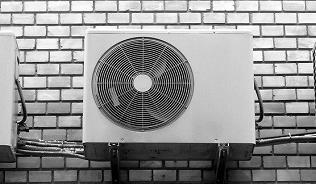Listen to more episodes of 'From the Archive' on the series hub.
This article is taken from 'Transforming the planet: Our vision for the future of environmental science', which sets out a vision for the role of environmental science in facilitating the transition to a sustainable society.
With the long-awaited UK Chemicals Strategy yet to be published, and ongoing conversations about the future role of a global science-policy panel on chemicals and pollution, the article reminds us of the importance of a strategic and integrated approach to addressing chemicals, pollution, and environmental contamination.
Read our full vision in Transforming the planet.
Recent years have seen a significant increase in the recognition of the climate crisis and ecological emergency in policy, media, and across society. Despite this, the extent of environmental pollution remains largely unacknowledged. Efforts to construct a UN-led science-policy panel on chemicals and pollution will likely make a substantial contribution to improving that situation, much akin to equivalent panels on climate change and biodiversity (the IPCC and IPBES, respectively).
In many instances, efforts to address climate change and biodiversity loss will also address pollution, due to the interlinking nature of the crises and the ways that they are driven by the same social and economic systems. This means that the majority of action on the triple crisis poses the potential opportunity for co-benefits.
Cross-system consequences of pollution and chemicals
Contaminants, chemicals, and other pollutants have the potential to affect almost any natural system, all the way from core natural systems such as air, water, and land down to biological systems like the human body. Within that context, specific challenges such as soil degradation and noise pollution have been under-addressed. Action to address environmental pollution therefore interacts directly with society‘s ability to secure a vast array of ecosystem services, as well as basic human needs like health and wellbeing.
Likewise, many sources of pollution can affect multiple natural systems, often moving through one into another and polluting each along the way. For example, ammonia can be a serious challenge for both air and water quality, and one of its most significant sources in agricultural fertiliser can also lead to the degradation of soil organic matter. Standard approaches such as the Source-Pathway-Receptor model are useful for managing the different consequences of a particular pollutant, as well as the ways that interim pollutants can be transformed as they travel through the environment.
Why do we need framework-level governance?
Even while these approaches can support robust risk assessment and direct interventions, the state of pollution requires framework-level approaches to ensure the overall strategic management of the crisis. This is especially important in the context of environmental pollution, where there is a simultaneous need for regulatory generality and regulatory specificity, which only framework-level governance will be well-placed to address.
The need for a general approach to chemicals arises from the uncertainty surrounding emerging contaminants and novel chemicals, which are being generated and proliferated into the environment at an unprecedented rate. Chemical products for cleaning and personal care, agricultural chemicals such as fertilisers and pesticides, and deliberately biologically-active medical products are all contributors to an increasing presence of chemicals in the environment.
Even if the social and economic drivers of chemical use are addressed, the precautionary principle demands that regulation retains the scope to consider dangerous pollutants outside of those specific chemicals for which there exists a deep and robust evidence base.
The regulation of Perfluoroalkyl and Polyfluoroalkyl Substances (PFAS) has demonstrated the incredible complexity of novel families of chemicals, including related chemicals like Perfluorooctane sulfonate (PFOS) and Perfluorooctanoic acid (PFOA). The vast and differentiated nature of these chemicals, their sources, their contextual safe limits, and their specific dose relationships demands a regulatory approach which has the flexibility to catch chemicals as soon as they emerge on the horizon. Broad legislation which allows chemicals to be regulated in general terms will be a necessary first line of defence against emerging contaminants and novel consequences of pollution.
Simultaneously, specific regulations needed to deal with the different effects of pollutants on the environment. Tailored approaches and specific limit levels allow for more bespoke control over a wider array of pollutants. In addition, fine particulates, including PM2.5, can have no safe levels for human health, requiring a specific regulatory approach which goes beyond limit levels.
To that end, framework-level governance will be essential to address pollution. As for most environmental challenges, it will be needed to unite different scales of action, different systems and pollutants which have linked sources and interwoven impacts, and different stakeholders involved in the governance landscape.
It also has a fundamental role in creating coherency between regulatory floors which provide a general basis for addressing contaminants and targeted measures which address specific pollutants or contexts. Such frameworks offer a crucial basis for cross-stakeholder communication and public understanding, both of which will be necessary to address the drivers of chemical pollution.
What next: reshaping our approach to environmental pollution
As with the climate crisis and biodiversity loss, a core element of addressing environmental pollution will necessitate going beyond mitigation towards identifying opportunities for regeneration and remediation, embedding improvement at every scale. While pollution is less scalar in nature than addressing a single negative output, such as carbon emissions, the development of approaches such as Air Quality Positive developments offers some insight into how more transformative approaches to pollution can take place.
- Read 'Transforming the planet' for more information on the future of environmental science
- Follow the latest developments from COP28 and negotiations on the new science-policy panel on chemicals and pollution
- Support the work of the IES by becoming an Affiliate
- If you’re a professional in the environmental sector working with science, join the IES as a member
The best future the world can hope for would systematically reshape the economic and social drivers causing pollution, but a future which significantly addresses the context of environmental pollution can still be achieved with integrated frameworks for governing chemicals, using both general and targeted measures.





